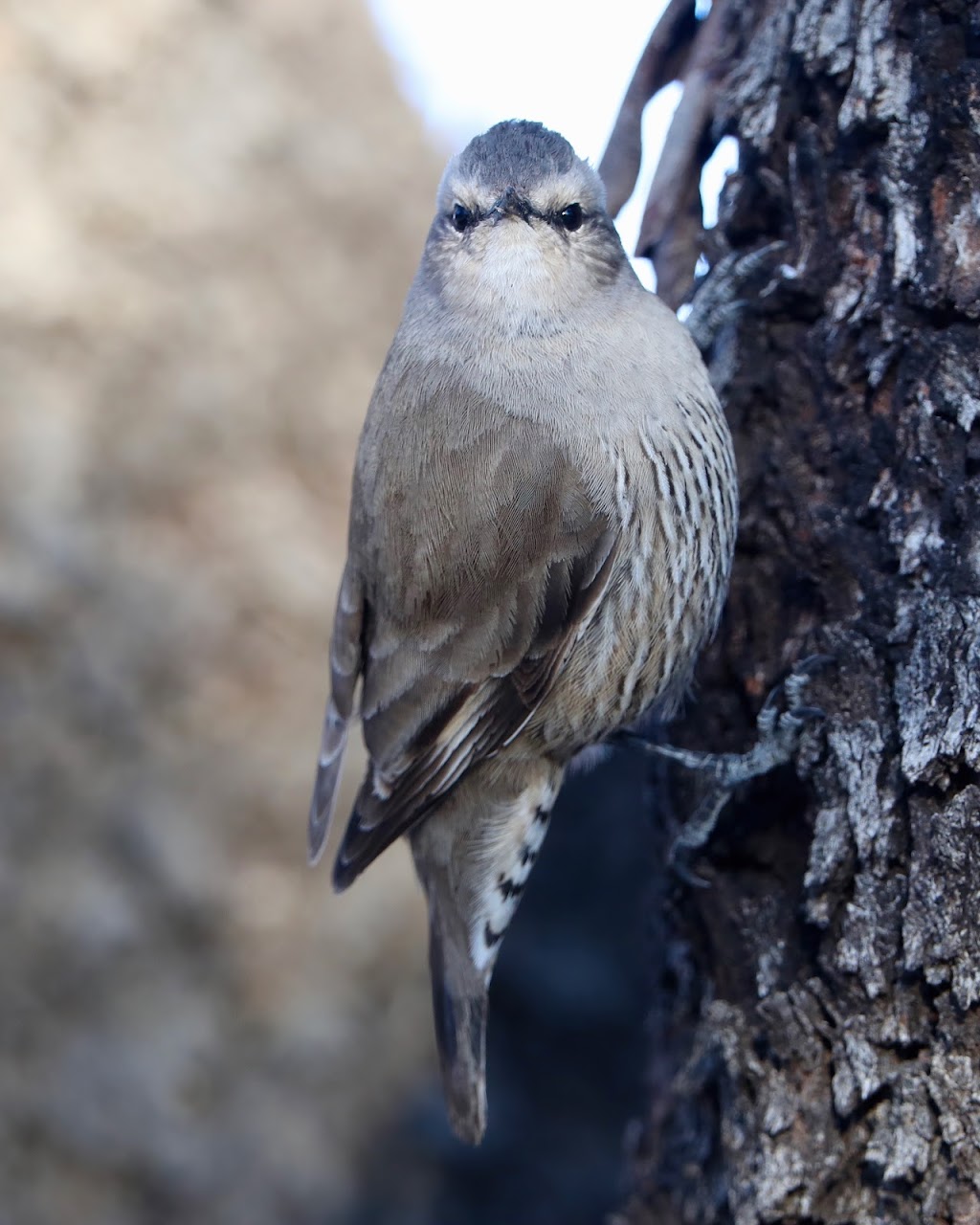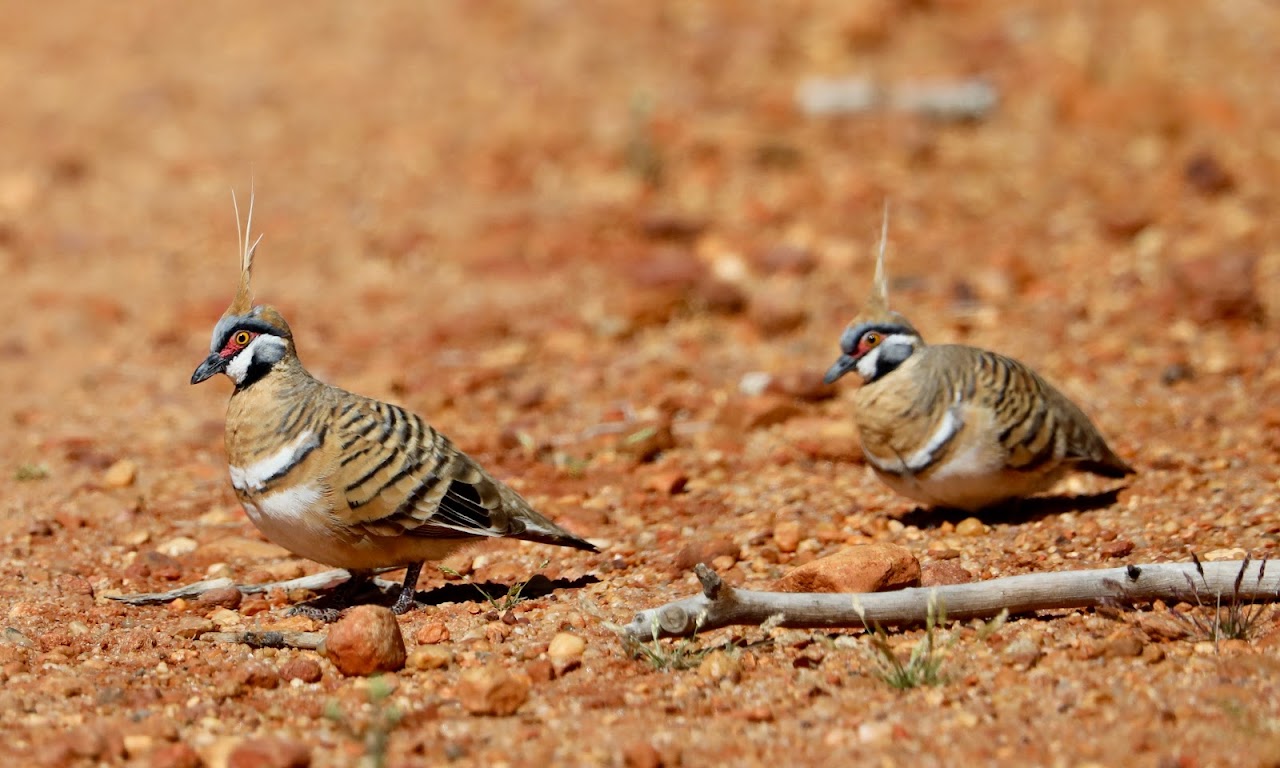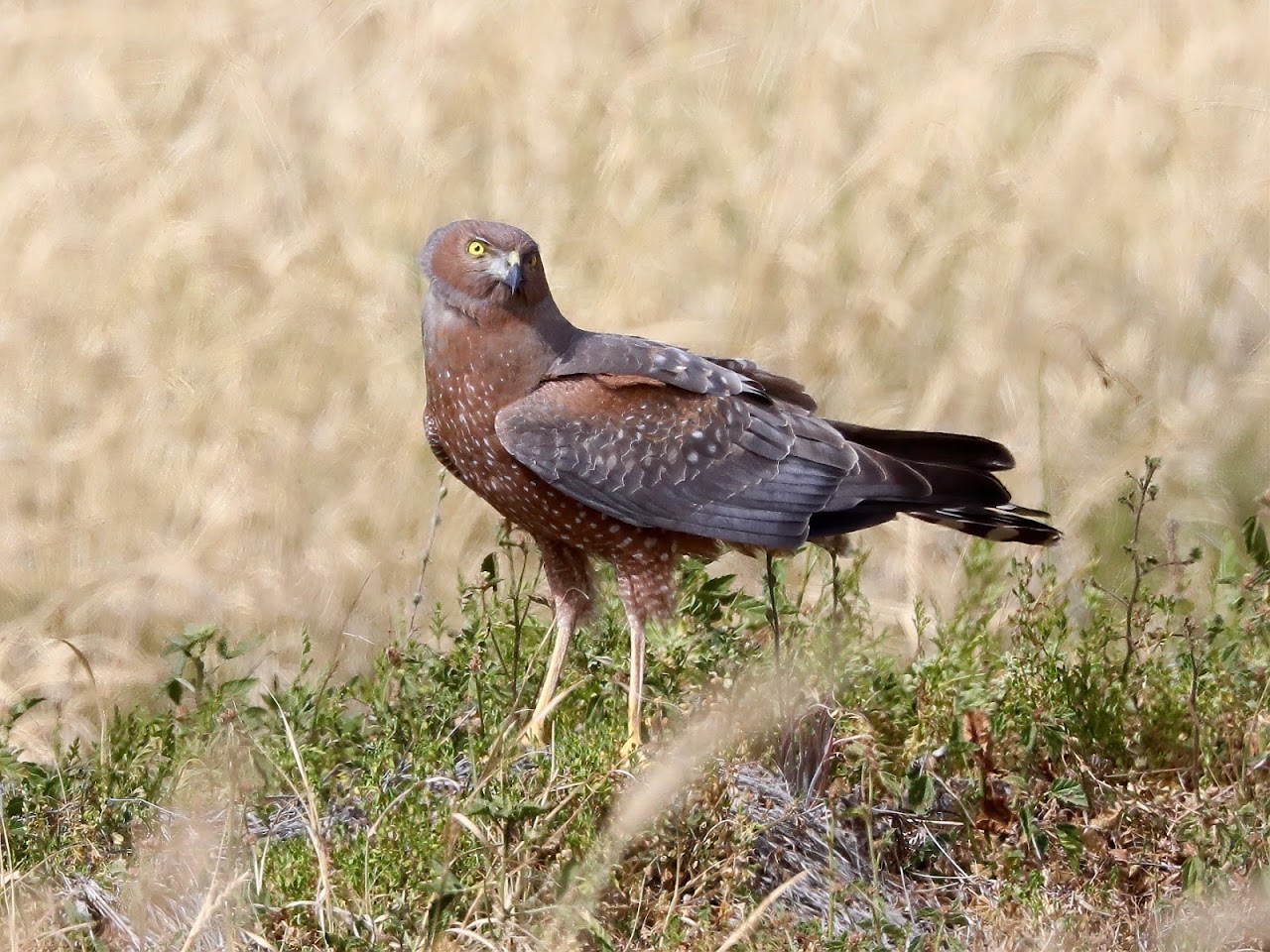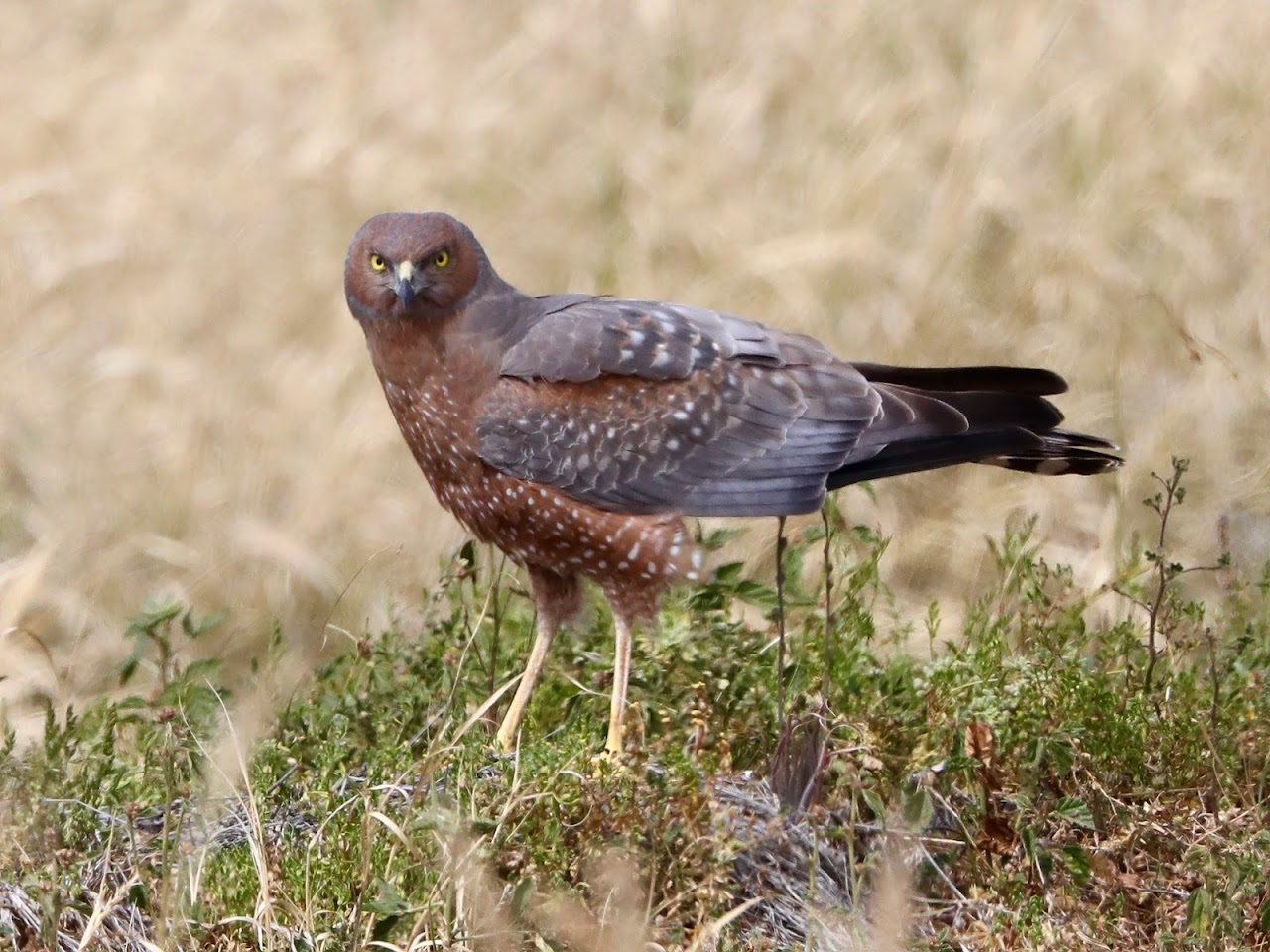While camped in Idalia National Park in outback Queensland at Monks Tank – an earthen water storage dam – we found a Spotted Bowerbird bower. The bower location was well concealed however with the temporary use of a rope, one end of the bower was exposed enough to enable some photos.
Like other species of Bowerbird, male Spotted Bowerbirds live a hyperactive life building and maintaining a bower, protecting it from other males and using it to attract females during the breeding season in addition to simply finding food each day to survive. Bowers may last for years and are maintained throughout the year, though activity at the bower varies across the seasons.
There were three adult Spotted Bowerbirds at or around the bower, however given males and females look the same – except the females have a smaller crest which is not much help to separate the sexes – it was not clear if any of the three birds were female or if they were all males. From observations over about one and a half hours at the Monks Tank bower it seemed likely that one male was the owner of the bower and the other two birds were males as they were vigorously chased away from the bower on numerous occasions whenever they put in an appearance.
The owner of the bower came and went and when in attendance I observed him perform a range of activities including placing a stem of grass in the bower wall, moving green fruits in and out of the bower, picking up and moving objects at the bower entrance, and bringing a large bill full of a green plant to the bower entrance which was consumed in five portions.
The photos below show some of this action.
Please click on photos to enlarge.
The first photo was taken looking through the bower which is made of grass stems with collections of generally white objects at either end. The second photo shows the collection of green fruits within the bower plus a few prized green glass objects, a few polished rounded grey stones and a few other miscellaneous pieces of plastic.
The assumed bower owner at one entrance to the bower.
A back view of the bird showing a partly exposed pink erectile crest, which can be completely covered or exposed by degree and erected when the bird is excited, and the ash grey patch on the lower nape – the Western Bowerbird does not have a grey nape.
The next photo shows the owner chasing another bird away with much loud churring, grating, hissing and throat-clearing noises (voice description taken from Graham Pizzey’s field guide).
This photo shows the bird with a green fruit – there was a lot of moving of the green fruits into and out of the bower and also on two occasions the bird flew in with a fruit. In all our walks in different locations within the park we did not see the shrub with this fruit. Given the timing of the arrival of fruit there must have been at least one plant with fruit close to the bower.
The bird picked up and dropped pieces of clear glass and a rare red plastic item.
The bird brought in a bill full of a green plant which it ate at the bower entrance – perhaps the bower owner could not afford to be away from the bower too long as competitors would soon move in or steal objects – so eating at the bower minimised time away.
Male Bowerbirds perform displays at the bower entrances often using objects accumulated there as part of their dances and they accompany these with varied vocalisations. None of this behaviour was observed at Monks Tank however this is not surprising given breeding is generally from September to December. Females are attracted to the bowers to mate and are solely responsible for nest building, incubation and raising of young – the males take no part at all.
The Western Bowerbird is very similar to the Spotted. The Avithera post “Olive Pink Botanic Gardens, Alice Springs” shows a Western Bowerbird at a bower:
https://avithera.blogspot.com/2015/07/olive-pink-botanic-gardens-alice-springs.html








































.jpeg)

.jpeg)









